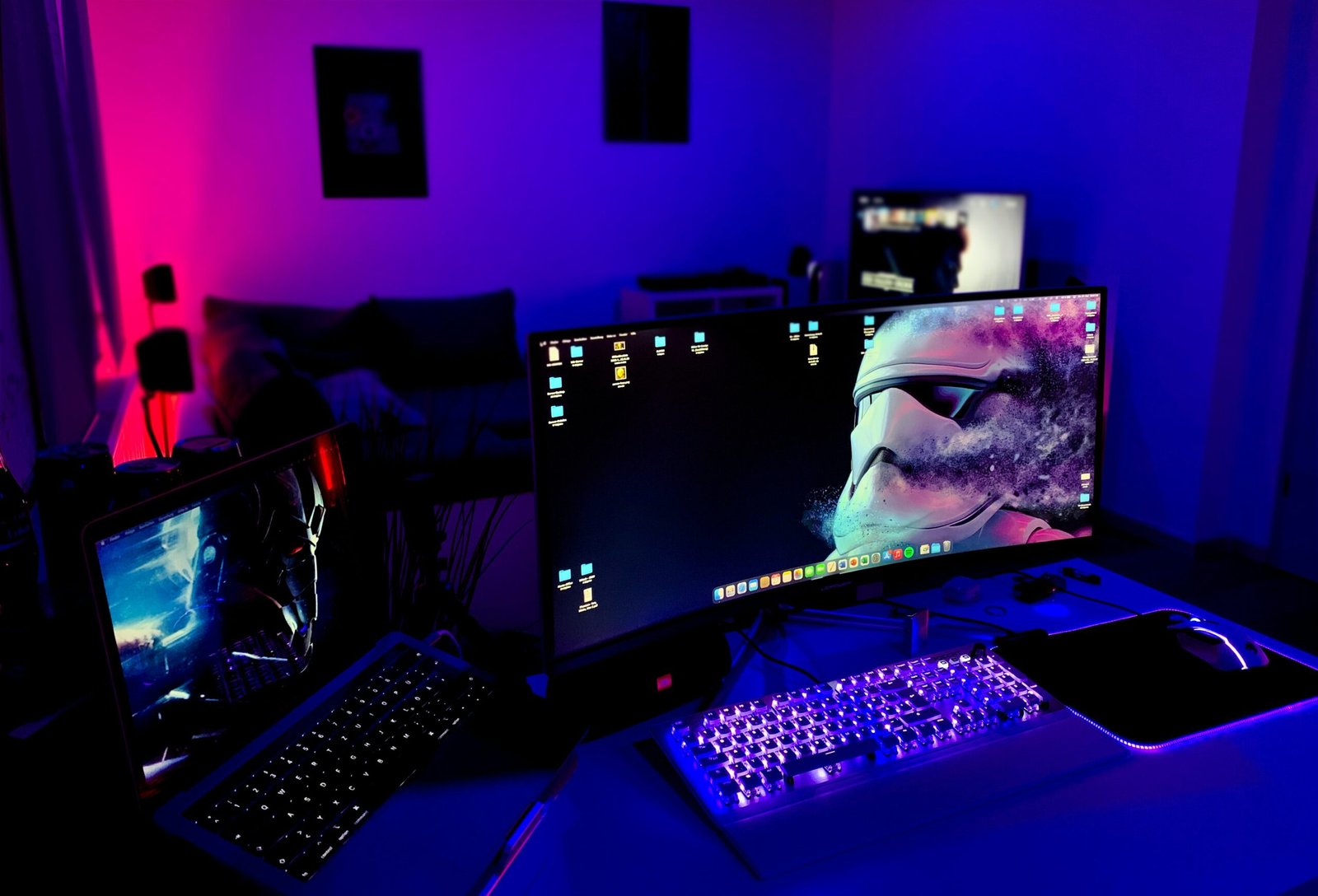How to Check if Your Screen is LED or LCD
Understanding LED and LCD Technologies
Understanding the fundamental workings of LED (Light Emitting Diode) and LCD (Liquid Crystal Display) screens can help differentiate between the two. An LED screen utilizes a matrix of light-emitting diodes to generate images. Essentially, each diode acts as a small, individual light source, capable of delivering vibrant, highly saturated colors. LED technology is renowned for its energy efficiency and longevity, forming the backbone of modern display screens in devices ranging from televisions to laptops.
On the other hand, an LCD screen operates using liquid crystals. These liquid crystals do not emit light directly. Instead, they modulate light that flows through them. Typically, an LCD screen comprises multiple layers, including a backlight source—often powered by LED in more recent models—polarizers, and the liquid crystals themselves. These crystals rearrange to either block or allow light to pass through, creating images.
One critical distinction lies in how these technologies handle light. While LED screens are self-emissive, generating light from the diodes themselves, LCD screens depend on an external light source. This translates to differences in brightness and color representation, with LED displays frequently boasting better contrast ratios and deeper blacks due to their ability to turn off individual diodes completely.
Both technologies have evolved significantly since their inception. LED technology began making headlines in the mid-1980s, revolutionizing screens with improved brightness and color accuracy. Similarly, LCD technology, developed in the 1960s, rapidly grew in popularity through the late 20th century, thanks to its ability to create slim, lightweight screens suitable for various devices.
Today, both LED and LCD technologies coexist across many applications. LED screens are prevalent in high-definition TVs, computer monitors, and digital billboards, thanks to their superior light control and energy efficiency. Conversely, LCD screens, often paired with LED backlights, remain widely utilized in smartphones, tablets, and low-cost monitors due to their affordability and excellent color fidelity.
Physical Characteristics and Labeling
To determine whether your device features an LED or LCD screen, a physical inspection can provide valuable clues. Start by examining the body and frame of the device. Many manufacturers include labels or markings that clearly indicate the type of screen in use. Look for labels such as ‘LED TV’ or ‘LCD TV,’ which can often be found on the back or bottom of the device. These markings are typically close to other technical specifications or the model number of the device.
Inspecting the model number can also be immensely helpful. By searching the model number online, you can often find detailed product specifications that will clarify whether the screen is LED or LCD. For example, devices labeled with a model number followed by “LED” or “LCD” typically denote their screen type. Websites like the manufacturer’s official page, online tech forums, or retail listings can provide this information.
Moreover, it is important to note that different manufacturers may have distinct labeling practices. For instance, some brands might use specific terms like ‘LED-backlit LCD’ to describe their screens, indicating that while the screen technology is LCD, it uses LED backlighting. This nuanced labeling often appears in user manuals, spec sheets, or even directly on the device’s casing.
Manufacturers often place these labels in areas that are not immediately visible, such as on the back panel or underneath the device on the stand. Therefore, a thorough inspection is recommended. Adhesive labels, engraved markings, or even printed characters that combine letter codes can give away the screen type.
In summary, by carefully checking the physical characteristics and any available labels or model numbers on your device, you can confidently determine whether it boasts an LED or LCD screen. Remember to consider variations in labeling practices among different manufacturers to ensure accurate identification.
Using Device Settings and Manuals
To determine whether your screen is LED or LCD, one of the most direct methods involves checking your device’s settings or user manual. Modern gadgets often include detailed information about their displays within the ‘Settings’ or ‘About Device’ sections. Below, we’ll walk through how to access this information and decipher the terminology used to describe your screen type.
First, navigate to your device’s settings. For most smartphones, tablets, and laptops, you can find this option by selecting the settings icon from your home screen or app drawer. Once in the settings menu, look for a section labeled either ‘About Device,’ ‘Device Information,’ or ‘Display.’ In this section, manufacturers typically include comprehensive data about the device’s hardware, including screen specifications.
When examining the information provided, look for terms such as ‘LED,’ ‘LCD,’ ‘OLED,’ or ‘AMOLED.’ The presence of ‘LED,’ ‘OLED,’ or ‘AMOLED’ suggests that the device uses a light-emitting diode-based display, which contrast with standard LCDs. LCD screens are often listed simply as ‘LCD’ or ‘TFT LCD.’ If this information is absent or unclear, consulting the user manual is the next step.
User manuals offer an in-depth look at your device’s components and features. These manuals may be provided in print with your device or available online on the manufacturer’s website. To locate the screen type, search for sections titled ‘Specifications’ or ‘Technical Information.’ This part of the manual will usually detail the kind of display used, often formatted under display characteristics. Physical manuals might have index sections where you can quickly locate the display specifications.
In summary, to decipher the screen type of your device, navigate through the ‘Settings’ or ‘About Device’ sections, which commonly list hardware details. For additional clarity, reference your device’s user manual, focusing on the specifications section where display technology is explicitly mentioned. This combined approach should effectively reveal whether your screen is LED or LCD.
Professional Assessment and Online Resources
If the methods previously discussed leave you uncertain about whether your screen is LED or LCD, seeking a professional assessment can be an invaluable next step. Taking your device to a reputable repair shop can provide a definitive answer from trained technicians experienced in distinguishing between various screen technologies. These professionals often have specialized tools and diagnostic techniques that can accurately identify the type of screen on your device. Additionally, repair shops frequently deal with a wide range of devices, giving them the practical expertise that can resolve uncertainty swiftly and effectively.
Another reliable option is to directly contact the manufacturer of your device. The manufacturer’s customer service department can provide detailed specifications about your device model, often based on the serial number. They have comprehensive records and databases to verify whether your screen is LED or LCD, providing you with official information that is precise and trustworthy. This method not only ensures accurate identification but also offers the opportunity to ask other relevant questions about your device.
For those who prefer a self-guided approach, reputable online resources can also be very useful. Manufacturer’s websites typically host support pages, forums, and spec sheets that are detailed enough to identify the screen type from the device’s model number. Moreover, industry-specific forums and communities, where enthusiasts and experts discuss various devices, can provide insights and additional confirmations about your screen.
The key to using online resources effectively is to ensure that the information comes from credible sources. Manufacturer’s websites, established tech blogs, and well-moderated forums are generally reliable. Cross-referencing information across multiple reputable sources can further validate the accuracy, giving you confidence in your findings. In the digital age, accessing credible and detailed specifications of your device online has never been easier, making it a dependable option for screen type identification.







